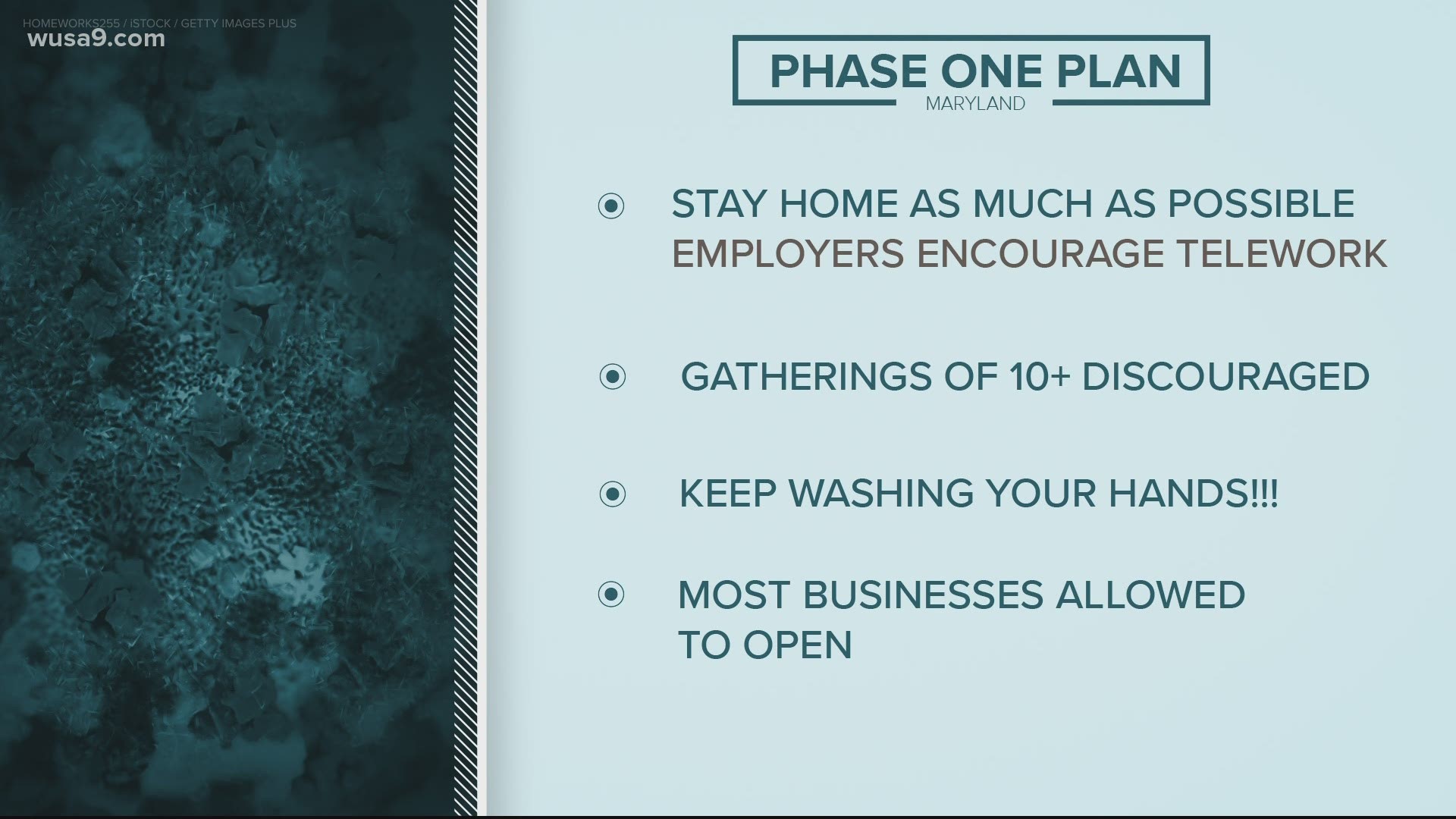WASHINGTON — Citing a "14-day trend of plateauing and declining" hospitalizations, Maryland Gov. Larry Hogan announced Wednesday that his state is ready to begin Phase One of a re-opening from coronavirus restrictions.
At 5 p.m. Friday the stay-at-home order will be lifted and replaced with a "safer-at-home" public health advisory. What does a safer at home policy look like?
Residents are encouraged to stay home as much as possible. Employers are encouraged to promote teleworking while employees are encouraged to work from home as much as possible.
Social distancing and avoiding close gatherings of 10 or more people are also encouraged. And of course, people are encouraged to keep washing their hands.
Almost all businesses, including houses of worship, are allowed to open in some capacity, encouraged to take a pledge saying that they will stick to the "best practices around social distancing," -- all encouraged, but no longer ordered.
The governor’s order gives counties the option of either following the new guidelines, or keeping the original, stricter ones in place, which is exactly what the leaders of Prince George's and Montgomery counties will be doing.
These two counties lead the state in confirmed cases, with a combined total of slightly more than 17,000. They also lead in deaths. Officials in both counties have stated, in no uncertain terms, that they will be opening only under the guidance of public health experts.
We could discuss at length why these two counties are the hardest hit, but right now, what I want to know is: How does Maryland plan to keep the residents there safe from further infections and deaths? By opening the rest of the state, aren’t they being put at further risk, even though they are staying closed?
We've already begun to see around the nation what happens to infection rates when restrictions are relaxed. What happens when people from other counties go into them, interacting with the people who live there?
Despite their names, Prince George's and Montgomery aren’t medieval townships with moats and drawbridges. They can't keep folks out, and they can’t keep residents in, which means the virus will be coming and going.
The only conclusion I can come to is that the governor has decided the predicted economic boost is worth the risk. You can hear this in his words.
It's a "painful truth" that the virus "will be a part of our daily lives, and potential outbreaks will continue to remain a deadly threat until a vaccine is widely available."
He also said he's anxious to move into Phase II. If this is the case, then the state of Maryland needs to have a plan in place to deal with and respond to their needs. If they haven’t already, I would encourage them to devise one, and soon.

